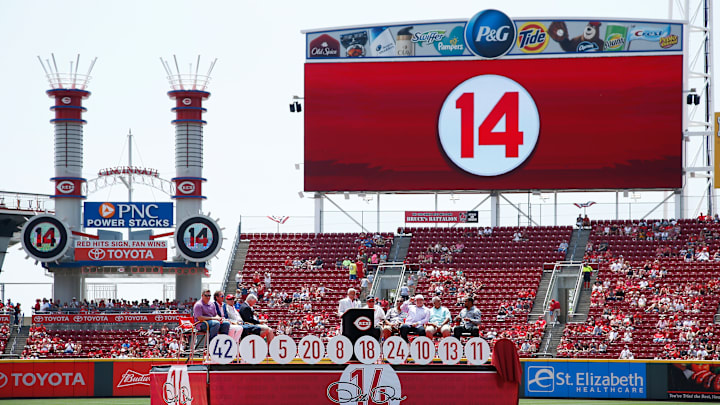6. Reds first baseman Tony Perez (No. 24)
I think it's fair to say that we've reached the point where the debate is going to become much more intense. While Fred Hutchinson, Dave Concepcion, and Sparky Anderson are all players and managers that fans have rooted for in the past, these six players are just on a different level.
There are a number of Reds fans who will tell you how great Tony Perez is and that he belongs on the Mount Rushmore of past Cincinnati players. But he's just not as good as the other five players who've had their numbers retired by the franchise.
Perez was a great player who came up huge in the clutch and was the heart and soul of the Big Red Machine. You'll get no argument from most fans in those areas. But the numbers just don't back up the perceived dominance of the Big Doggie.
Perez, who was elected to the Hall of Fame after nine years on the ballot, was a seven-time All-Star and helped the Reds to two World Championships as the first baseman on those great Cincinnati teams of the 1970s. For his career in Cincinnati, Perez hit .283 with 287 round trippers.
Tony Perez's No. 24 is hanging high above the playing surface at Great American Ball Park. Perez was an all-time great within the Reds organization, but he's just outside the Top 5.
